Eco Living
Architecture
Sustainable Homes
10 Ways to Protect Your Home From Bushfires
If you live in a bushfire-prone area, it's crucial to protect your home and be prepared. Here are 10 key steps to take
Climate change is making bushfires increasingly common in Australia, and the effects on the environment and our communities, as we saw in 2019 and 2020, can be devastating. Unfortunately there is no bushfire-proof house design, but protecting our homes is still a key measure and it starts from the ground up. Whether you’re building, renovating or live in a low-risk area and just want to make a few simple changes to boost your home’s resilience, here’s how to go about it, according to the experts.
2. Build with non-combustible materials
“The bushfire construction standard (Australian Standard AS 3959 Construction of buildings in bushfire-prone areas) requires that you use certain materials for exposed elements, cladding, roofing, and windows and doors, and determines which materials you can use based on the bushfire threat level of your site,” says Croft.
You can still use timber and other combustible materials on the lower levels of your home where there is a lower bushfire threat, he adds. “However, higher levels require either non-combustible materials, such as brick, concrete, metal walling and roofing, AAC [autoclaved cellular concrete, which is made with closed air pockets and comes in blocks or panels], fibre-cement sheeting or a material or assembly that has been appropriately tested,” he says.
“The bushfire construction standard (Australian Standard AS 3959 Construction of buildings in bushfire-prone areas) requires that you use certain materials for exposed elements, cladding, roofing, and windows and doors, and determines which materials you can use based on the bushfire threat level of your site,” says Croft.
You can still use timber and other combustible materials on the lower levels of your home where there is a lower bushfire threat, he adds. “However, higher levels require either non-combustible materials, such as brick, concrete, metal walling and roofing, AAC [autoclaved cellular concrete, which is made with closed air pockets and comes in blocks or panels], fibre-cement sheeting or a material or assembly that has been appropriately tested,” he says.
The materials within your four walls matter too. According to the government’s YourHome website, “Wall and ceiling insulation should be non-combustible. Materials inside a home can also pose a risk if they are toxic when heated or burned, so non-toxic paints, wall linings and floor coverings are recommended”.
“Also avoid having unenclosed sub-floor spaces to better protect your floors and sub-floor structures,” says Croft.
Building or renovating? Find a sustainable architect near you on Houzz
“Also avoid having unenclosed sub-floor spaces to better protect your floors and sub-floor structures,” says Croft.
Building or renovating? Find a sustainable architect near you on Houzz
If your home is in a lower-threat area and you want to feature timber in your build, choose species that perform well in a bushfire, says Croft. And be sure to select non-combustible materials for elements such as window screens, seals, awnings and fencing.
3. What about roof and house designs for bushfire areas?
Avoid complex roof shapes with valleys and ridges where bushfire embers can lodge and build up, advises Jimmy Scott, general manager for resilience and recovery at the Queensland Reconstruction Authority, an organisation that created the Bushfire Resilient Building Guidance for Queensland Homes.
A roof-sprinkler system can also help reduce damage from ember attacks in bushfires.
Avoid complex roof shapes with valleys and ridges where bushfire embers can lodge and build up, advises Jimmy Scott, general manager for resilience and recovery at the Queensland Reconstruction Authority, an organisation that created the Bushfire Resilient Building Guidance for Queensland Homes.
A roof-sprinkler system can also help reduce damage from ember attacks in bushfires.
“Other resilient building options include non-combustible steel framing to help protect the interior of your home, and choosing materials and designs according to your exposure level, for example tiles or polished concrete on lower floors,” says Scott.
4. Should I upgrade to bushfire-rated windows and doors?
It’s a wise idea to upgrade all external windows and doors to ensure they meet the standards in your area. “External windows and doors are the weakest links [when it comes to bushfires] so pay close attention to these and work out appropriate solutions, including adding shutters if necessary,” says Joe Mercieca, owner and principal of Blue Eco Homes, a building firm that recently won the 2022 HIA Australian GreenSmart Home award.
It’s a wise idea to upgrade all external windows and doors to ensure they meet the standards in your area. “External windows and doors are the weakest links [when it comes to bushfires] so pay close attention to these and work out appropriate solutions, including adding shutters if necessary,” says Joe Mercieca, owner and principal of Blue Eco Homes, a building firm that recently won the 2022 HIA Australian GreenSmart Home award.
The government’s YourHome website states that in bushfire-risk areas; “Window glazing should be a high-performance toughened glass. Screening toughened glass improves its performance and can help keep debris away from the glass. Window and door frames should be selected and installed to reduce ignition potential or gaps that allow embers into the home. Using a windowsill with a steep slope also helps to keep debris away from window ledges.
“Flyscreen materials can reduce ember entry sizes in sub-floor spaces and windows. Flyscreens may be aluminium, bronze, or corrosion-resistant stainless steel, dependent on the BAL [bushfire attack level], but cannot be plastic or fibreglass. Flyscreen materials must also have an aperture of less than two millimetres,” states the organisation.
“Flyscreen materials can reduce ember entry sizes in sub-floor spaces and windows. Flyscreens may be aluminium, bronze, or corrosion-resistant stainless steel, dependent on the BAL [bushfire attack level], but cannot be plastic or fibreglass. Flyscreen materials must also have an aperture of less than two millimetres,” states the organisation.
5. What else should I do to prepare for bushfire season?
“Seal any gaps [in your home] to prevent embers from entering,” says Croft. “Also screen vents and openings – the bushfire construction standard provides guidance on this.”
All gaps in your home, including vents, weepholes and joints, should be less than two millimetres in size, according to the government’s MyHome website.
Browse more images of beautiful Australian living rooms featuring timber on Houzz
“Seal any gaps [in your home] to prevent embers from entering,” says Croft. “Also screen vents and openings – the bushfire construction standard provides guidance on this.”
All gaps in your home, including vents, weepholes and joints, should be less than two millimetres in size, according to the government’s MyHome website.
Browse more images of beautiful Australian living rooms featuring timber on Houzz
6. Have a decent water supply
“Ensure your property has an adequate water supply in the form of a water tank, pool and a pump as you may not be able to rely on town water supply in the event of a bushfire. Aim for a water tank with a capacity of at least 10,000 litres,” says Mercieca.
The NSW Rural Fire Service also advises having a sturdy hose that can reach all the way around your house.
“Ensure your property has an adequate water supply in the form of a water tank, pool and a pump as you may not be able to rely on town water supply in the event of a bushfire. Aim for a water tank with a capacity of at least 10,000 litres,” says Mercieca.
The NSW Rural Fire Service also advises having a sturdy hose that can reach all the way around your house.
7. Keep up with maintenance
“It is vital to keep your home and its surrounds well-maintained [to reduce bushfire risk]. Trim tree branches, clean gutters and downpipes, repair cracked tiles on roofs,” says Scott. “Objects surrounding the house, such as decks, fences, sheds and outdoor furniture, can pose a fire risk too.”
The NSW Rural Fire Service also suggests that you:
“It is vital to keep your home and its surrounds well-maintained [to reduce bushfire risk]. Trim tree branches, clean gutters and downpipes, repair cracked tiles on roofs,” says Scott. “Objects surrounding the house, such as decks, fences, sheds and outdoor furniture, can pose a fire risk too.”
The NSW Rural Fire Service also suggests that you:
- Mow grass and remove the cuttings.
- Have a cleared area around your home so firefighters have a safe area to work.
- Remove material that can burn around your home, such as door mats, wood piles, mulch, leaves and outdoor furniture.
8. What about landscaping for bushfires?
Well-considered landscaping can protect your home further. The YourHome website recommends that you:
Well-considered landscaping can protect your home further. The YourHome website recommends that you:
- Avoid using highly combustible mulch.
- Use hard surfaces closer to the house.
- Avoid planting trees that will grow tall near the house.
- Remove undergrowth where it could become a fire risk.
- Consider making fire breaks, especially in the path of likely fire spread.
- Ensure that all fencing close to the building is non-combustible and easy to maintain.
9. Upgrade your home’s existing features
Not planning a build or major reno any time soon? According to Croft, there are still several things you can do to make your home more fire-safe. These include:
Not planning a build or major reno any time soon? According to Croft, there are still several things you can do to make your home more fire-safe. These include:
- Low-cost options: Replace combustible fly screen material with a metal screening material, seal gaps, install draft seals to the bottoms of doors and metal cladding to the bottoms of combustible doors. Also position gas and other fuel tanks away from the house.
- Medium-cost options: Install bushfire shutters on windows and doors, sprinkler systems on roofs, enclose open sub-floors, and repaint exposed timber with a fire-retardant paint.
- Higher-cost options for high-risk bushfire areas: Re-clad your home with more resilient cladding materials, replace glazing with thicker toughened glass, and install sarking (a pliable membrane beneath tiled or metal roofs that improves fire protection and insulation) under existing roofs. Replace any combustible attachments on roofs, such as skylights and vents, with non-combustible styles and materials.
10. Have a bushfire plan
“It’s crucial to have a plan and prepare your property – and yourself emotionally – in the event of a bushfire. And be ready for the unexpected with a Plan B,” says Mercieca.
According to the government’s Yourhome website, your bushfire plan should cover the following:
“It’s crucial to have a plan and prepare your property – and yourself emotionally – in the event of a bushfire. And be ready for the unexpected with a Plan B,” says Mercieca.
According to the government’s Yourhome website, your bushfire plan should cover the following:
- Have clear routes for evacuation, and for firefighting services to defend your home.
- Monitor fire danger throughout the fire season, and be prepared to leave early during bushfire conditions.
- Pay attention to your emergency exit route. Decking, stairs, facades, and doors that are combustible can be a threat to safe evacuation.
- Remember that mains power can often fail during a bushfire, so you may need alternative sources of electricity if you are expecting to run systems such as water pumps. Solar power or generators may be an asset in the event of bushfire. Batteries should be stored away from the house if not properly enclosed.
Your turn
Are you worried about the effects of bushfires and climate change on your home? Tell us in the Comments below. And don’t forget to save these images, like this story and join the conversation.
More
Need to read more on protecting your home from extreme weather events? Don’t miss this story: Building in a Flood Zone? 12 Ways to Protect Your Home
Are you worried about the effects of bushfires and climate change on your home? Tell us in the Comments below. And don’t forget to save these images, like this story and join the conversation.
More
Need to read more on protecting your home from extreme weather events? Don’t miss this story: Building in a Flood Zone? 12 Ways to Protect Your Home







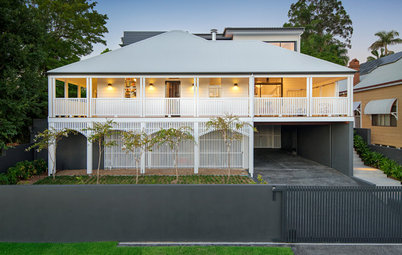
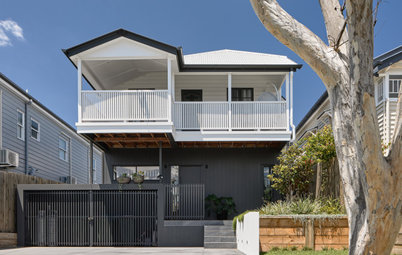
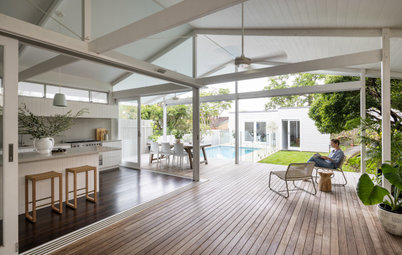
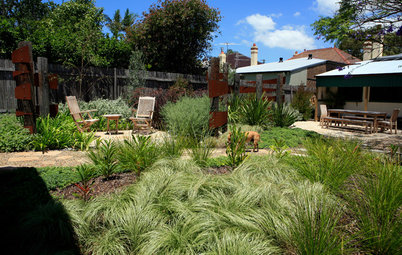
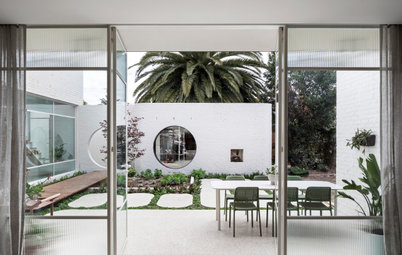
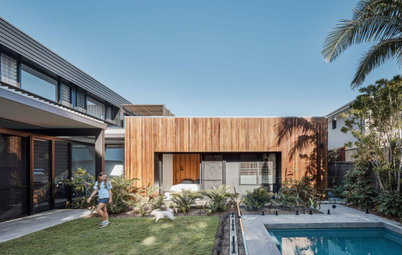
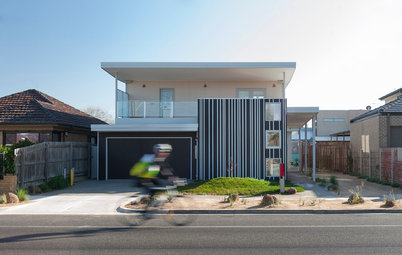

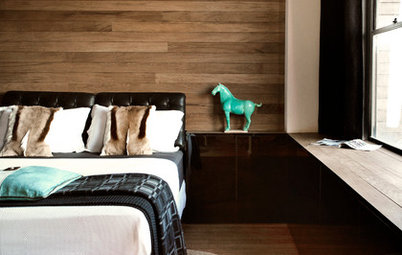

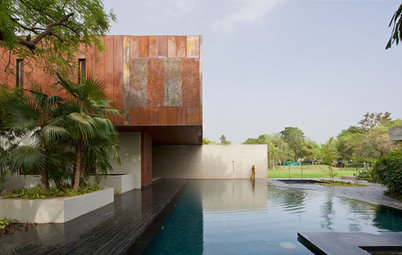
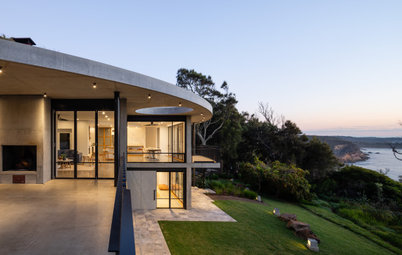
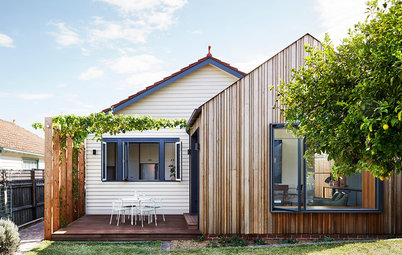
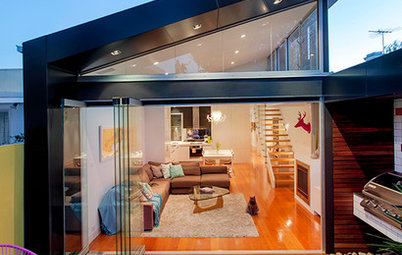
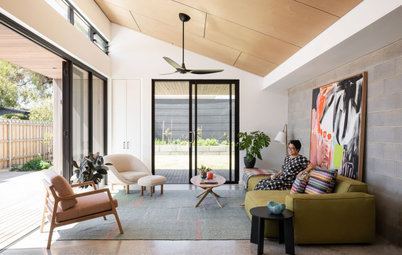
The first and most important thing to determine is whether the house or land you’re buying or already own is in a designated bushfire-prone area, says Simon Croft, executive director of building policy and services at Housing Industry Association (HIA), so find out if your home is at risk.
“There are maps available through local councils or government agencies that identify bushfire-prone areas, which you can generally access online,” he says. “They will show bushfire-prone areas and, in some states and territories, the areas that are at a higher bushfire risk and may need additional considerations. This will then determine which construction requirements need to be applied when you are building or renovating.”